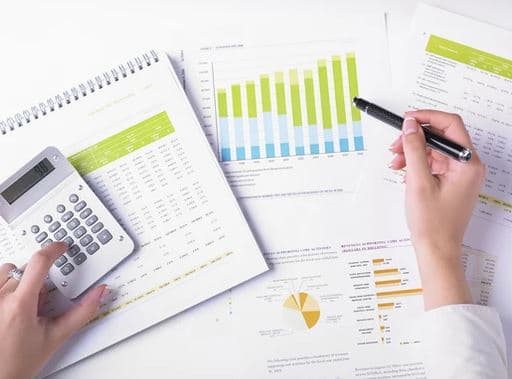Understanding the Chart of Accounts
by Cynthia Franklin

The Chart of Accounts is a set of categories to classify transactions in your business.
The chart of accounts is a list of all of the categories that your company uses to classify transactions in one place. Whenever you purchase something for your business, pay down a loan, generate sales, or pay yourself – all of these transactions must be classified into the correct account.
There are five main account types: revenue, expenses, assets, liabilities, and equity. Revenue and expenses appear on the income statement (also called profit and loss), and assets, liabilities, and equity come together to form the company balance sheet.
The income statement tells you how much money you made during a period (usually a year). The balance sheet tells you about the company-owned assets, deferred expenses or revenue you might have coming up, loan balances, and how much the owners have contributed to the business and/or taken out. It’s a snapshot of the financial health of the business.
Within these five account types, you can customize the account names to give you insights about the nature and performance of your business. A restaurant may have very different accounts than a law firm – but the overall purpose remains the same.
Revenue Accounts
Revenue (or Sales) is simply the gross amount of money you receive from customers for products or services. You can place all of your revenue into one account for simplicity, or you can create different accounts to track sales from different sources.
Cost of Goods Sold (COGS)
The Cost of Goods Sold account is an expense, but appears above the other expenses in order to track costs DIRECTLY associated to the cost of production. For example, the cost of purchasing inventory for a retailer would go into Cost of Goods Sold once the inventory is sold to a customer.
You may want to classify contract labor tied to creating your product or service as a cost of goods sold instead of an operating expense, which we will cover next.
Operating Expenses
Operating expenses represent money spent to run your business. Utilities, accounting, legal fees, advertising, and rent are just a few of the operating expenses that you might see on your income statement. You may even create a custom expense account to track something meaningful to your business.
After you have categorized all of the revenue and expense transactions coming through your business, you can track the profit (sales minus expenses) of your business.
Most business owners pay taxes on their net profit, rather than the amount they choose to pay themselves.
Assets
Assets are used to generate revenue in a business. Assets represent the cash, equipment, buildings, land, and other valuable items that the business owns. These are shown on the balance sheet. Investors and lenders want to see assets, because they can be liquidated (sold and turned into cash) in the event that the business falls on hard times.
Examples of assets include bank accounts, accounts receivable (money owed by customers), espresso machines, vehicles, and more.
Liabilities
Liabilities represent money owed to outside parties (typically). In the event that a business fell on hard times, the business assets would be liquidated, and business liabilities are paid before returning funds to the owners.
Examples of liabilities include credit card balances, business loans, loans from friends or family members to help start your business, vehicle loans, mortgages, and more.
Equity
Equity represents the amount leftover (after all business liabilities have been paid) that the business owner could pay themselves with in the event of a liquidation. It increases when owners contribute funds to the business or make a profit, and decreases when owners pay themselves or incur a loss.
Equity is basically how much of your business that YOU own (or shareholders) as opposed to a creditor.
Understanding your equity can help you determine if you have made a return on your investment, or the money that you contributed to start your business.
Account Numbers
The chart of accounts follows a numbering system to help easily identify account types.
Use of account numbers is optional for most small businesses.
A Sample Chart of Accounts
Customizing Your Chart of Accounts
The level of detail to use in your chart of accounts is up to you as the business owner. Some expenses might fit into more than one category. In that case, you’ll select the one that best helps you understand your business activity. For example, a monthly website hosting subscription could fall under Office Supplies & Software, OR Advertising & Marketing.
Some business owners may create what is called “Sub-accounts” which provide even more detail when looking at the chart of accounts. You might create accounts for different sales reps or divisions.
We recommend keeping the chart of accounts as simple as possible without compromising your ability to understand your business data. With too many account types, the financial reports become long, cluttered, and potentially overwhelming instead of insightful.
You can also use tools in Quickbooks Online such as tags, class tracking, location tracking, vendor reports, and others to drill down on the detail you need without using too many account types.
Book a free consultation today to learn more about streamlining your accounting process and getting the insights you need to run your business.